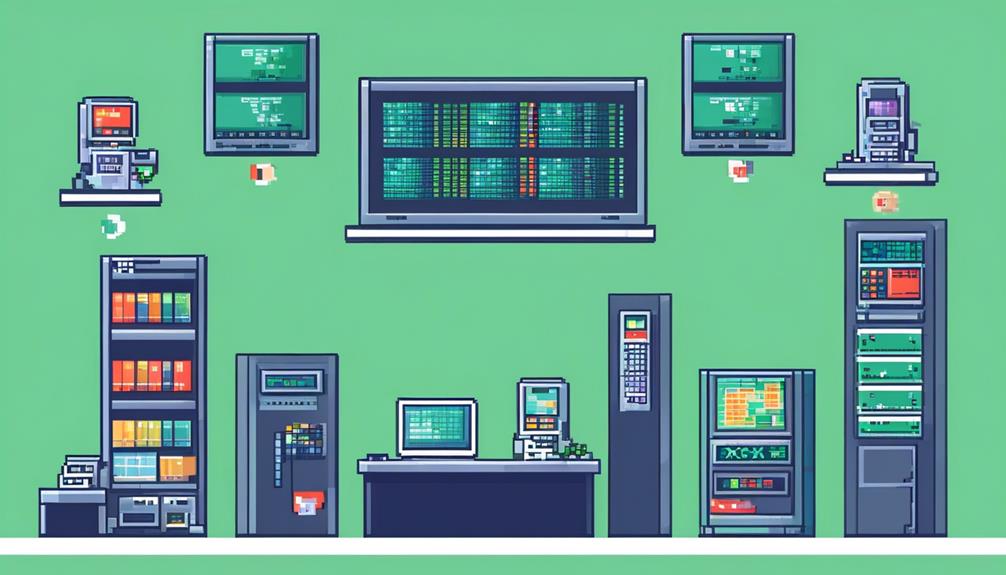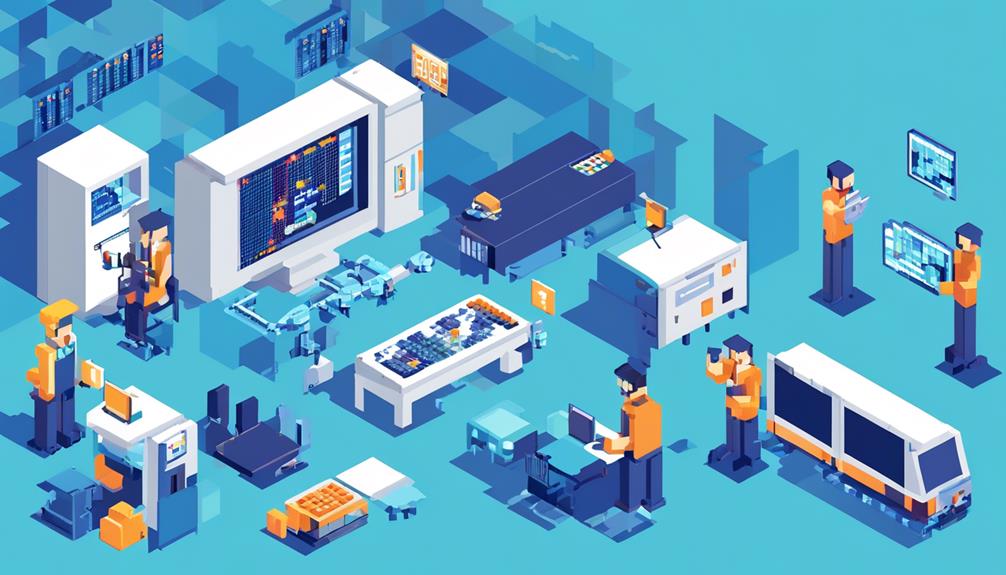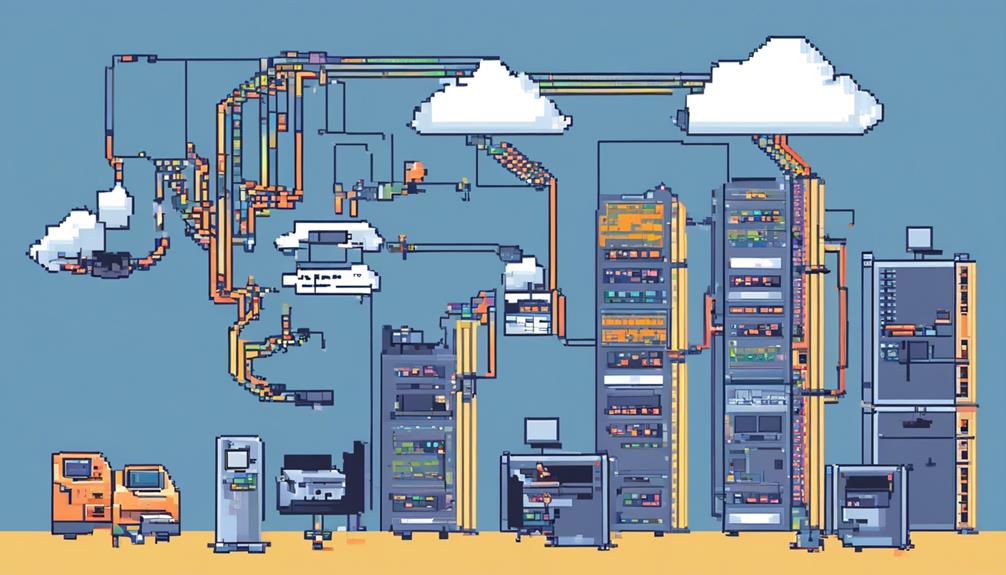When considering the deployment of PBX systems, a comprehensive cost analysis becomes imperative to ensure financial feasibility and efficiency. The expenses associated with implementing PBX systems can vary significantly based on the organization's size and specific requirements.
For small and medium-sized enterprises (SMEs), costs generally tend to be lower compared to larger organizations. One crucial aspect to consider is whether to opt for an on-premise PBX system or a Voice over Internet Protocol (VoIP) solution.
On-premise PBX systems necessitate the purchase of hardware and proprietary phones, which can substantially contribute to the initial set-up costs. Additionally, the maintenance costs for on-premise PBX systems can be relatively high.
Conversely, VoIP systems offer lower running costs per user and have a relatively low initial set-up cost as they eliminate the need for dedicated desk phones or hardware. Moreover, VoIP platforms provide a broader range of phone compatibility options, including the utilization of mobile devices such as smartphones or computer softphones.
By delving further into the various cost components, such as hardware expenses, licensing and software fees, installation and configuration charges, maintenance and support costs, training and employee adoption expenses, and conducting a comprehensive Total Cost of Ownership (TCO) analysis, organizations can make informed decisions and optimize their PBX system deployments.
Key Takeaways
- The size of the organization and the choice between on-premise or cloud-based solutions are key factors that affect the cost of deploying a PBX system.
- Traditional PBX systems generally have higher upfront costs, while small and medium-sized enterprises (SMEs) typically have lower deployment costs.
- Hardware and equipment expenses vary based on the type of PBX system and the size of the organization. On-premise systems require hardware and proprietary phones, while cloud-based systems eliminate the need for hardware investment.
- Licensing and software fees are influenced by the number of users or devices and the need for additional software licenses. Ongoing software maintenance and upgrade expenses should also be considered.
PBX System Deployment Costs

PBX system deployment costs can vary significantly depending on factors such as the size of the organization and the choice between on-premise or cloud-based solutions. Traditional PBX systems, which require on-premise installation, generally entail higher upfront costs compared to newer options such as hosted PBX or virtual PBX systems.
For organizations opting for a traditional PBX system, the cost is typically calculated on a per-employee basis. This means that the more employees there are, the higher the cost will be. Small and medium-sized enterprises (SMEs) generally incur lower deployment costs due to their smaller workforce compared to large organizations. However, it is important to note that the cost per employee can still be significant, especially for organizations with a high number of employees.
On-premise PBX systems require the purchase of hardware and proprietary phones, adding to the upfront expenses. These systems also necessitate ongoing maintenance, which can be expensive and impact the total cost of deployment. Additionally, there may be additional costs associated with hiring IT staff or outsourcing support for managing and maintaining the on-premise PBX system.
In contrast, cloud PBX systems offer a more cost-effective alternative. With a cloud PBX system, there are no upfront costs for hardware or proprietary phones as the system is hosted remotely. Instead, organizations pay a monthly fee per user, which can be more affordable, especially for smaller businesses. Cloud PBX systems also eliminate the need for in-house maintenance, reducing ongoing costs and allowing organizations to focus on their core activities.
Hardware and Equipment Expenses
The next aspect to consider when analyzing the cost of PBX systems is the expenditure on hardware and equipment. This includes servers, multiple lines, and control boards. The cost of these components can vary significantly depending on the type of PBX system and the size of the organization.
Here are some key points to understand about hardware and equipment expenses for PBX systems:
- Traditional PBX systems: The cost of hardware and equipment for traditional PBX systems can vary greatly depending on the number of employees and the size of the organization. Larger organizations may require more servers and control boards, resulting in higher costs. On the other hand, small and medium-sized enterprises (SMEs) typically incur lower expenses in this area.
- On-premise PBX systems: On-premise PBX systems require the purchase of hardware and proprietary phones, leading to a higher initial investment. Organizations opting for this type of PBX solution must consider the cost of servers, control boards, and other necessary equipment. Additionally, maintenance costs for on-premise PBX systems can be substantial, as regular upgrades and repairs may be required.
- Cloud-based PBX systems: In contrast to on-premise solutions, cloud-based PBX systems eliminate the need for organizations to invest in hardware and equipment. Instead, the PBX phone system is hosted and maintained by a service provider. This can significantly reduce upfront costs and ongoing maintenance expenses.
When considering PBX systems, it is important to evaluate the hardware and equipment costs associated with each type of PBX. Understanding the specific requirements of your organization and weighing the benefits and drawbacks of different solutions will help you make an informed decision regarding your phone system.
Licensing and Software Fees

When evaluating the cost of PBX systems, licensing and software fees are a critical aspect to consider. These fees are influenced by factors such as the number of users or devices utilizing the system and the need for additional software licenses for advanced features.
The cost of software fees can vary depending on the specific PBX solution and the level of customization required. It is crucial to account for ongoing software maintenance and upgrade expenses when assessing the overall cost of a PBX system.
Costs of Licenses
Licensing and software fees play a crucial role in determining the overall cost of implementing PBX systems. These costs can vary depending on the size and needs of the organization. Here are some key points to consider:
- PBX systems often require licensing for each user or simultaneous call, which can impact the total cost. The price per month per user can range from a few dollars to more expensive options.
- Additional software features, such as call recording or advanced call routing, may require extra fees. These add-ons can enhance the functionality of the phone system but should be evaluated based on their necessity and cost-effectiveness.
- Comparing different licensing models and software options can help optimize costs for PBX deployment. It is important to consider the needs of the organization and find a balance between cost and functionality.
Software Subscription Fees
Software subscription fees are an essential component to consider when evaluating the cost of implementing PBX systems. These ongoing fees encompass both licensing and software usage fees and are typically paid on a monthly or yearly basis.
The pricing for software subscription fees can vary depending on the number of users and the features included in the subscription package. These fees cover the licensing of the PBX software as well as ongoing access to support and updates.
It is important to factor in the cost of software subscription fees when conducting a cost analysis for deploying PBX systems. By considering these fees, businesses can accurately assess the total cost of ownership and make informed decisions about which PBX system best fits their budget and requirements.
Installation and Configuration Charges
The cost analysis of PBX systems must account for the charges associated with installation and configuration, which can vary depending on the complexity of the setup and the need for professional expertise.
- Varied Charges: Installation and configuration charges for PBX systems can range widely depending on the specific requirements of the business. Factors such as the size of the organization, the number of phone lines, and the desired features can influence the costs. It is important to conduct market research and obtain quotes from different service providers to compare prices and determine the best value for money.
- Setup Costs: The installation and configuration charges for PBX systems typically include the costs of setting up the necessary hardware and software components. This may involve installing and connecting the physical equipment, such as the PBX server, telephones, and wiring. Additionally, software configuration is required to customize the phone system to meet the specific needs of the business.
- Professional Expertise: Depending on the complexity of the PBX system deployment, professional expertise may be necessary for the installation and configuration process. This expertise ensures that the system is set up correctly and optimally, minimizing potential issues and ensuring smooth operation. Hiring professionals with experience in PBX systems can help businesses avoid costly mistakes and maximize the benefits of their phone system.
Understanding the installation and configuration charges associated with PBX systems is crucial for businesses when conducting cost analysis. It allows for effective budgeting and cost planning, ensuring that the phone system deployment is within the desired financial constraints. By considering the varied charges, setup costs, and the need for professional expertise, businesses can make informed decisions and select the most suitable service providers for their PBX system installation and configuration.
Maintenance and Support Costs

With the installation and configuration charges of PBX systems addressed, the focus now shifts to the maintenance and support costs associated with these systems. Maintaining and supporting a phone system, whether it is a traditional PBX or a new PBX system, is essential to ensure uninterrupted business communications. The costs involved in maintaining and supporting PBX systems can vary depending on several factors.
To better understand the maintenance and support costs, let's take a look at the following table:
| Factors Influencing PBX Phone System Maintenance and Support Costs | Examples |
|---|---|
| Complexity of the PBX system | Number of users, integration with other systems |
| Level of technical support required | On-site support, remote support |
| Need for hardware upkeep | Regular maintenance, replacement of faulty components |
| Software updates | Regular updates to ensure security and feature enhancements |
| Third-party maintenance and support contracts | Outsourcing to reduce the burden on internal IT resources |
As shown in the table, the complexity of the PBX system and the level of technical support required can significantly impact the maintenance and support costs. Additionally, the need for hardware upkeep, such as regular maintenance and replacement of faulty components, can contribute to these expenses. Regular software updates are also necessary to ensure the system's security and take advantage of new features.
Businesses have the option to outsource maintenance and support services by signing third-party contracts. This can help reduce the burden on internal IT resources and provide access to specialized customer support.
It's important for businesses to carefully consider the maintenance and support costs when choosing a PBX system. Cloud-based PBX systems often include maintenance and support as part of their subscription, reducing additional costs for businesses.
Training and Employee Adoption Expenses
Employee training and adoption expenses play a crucial role in ensuring the effective implementation and utilization of a PBX system within an organization. These costs are essential for equipping employees with the necessary skills and knowledge to operate the system and maximizing its potential benefits.
Here are some key points to consider regarding training and employee adoption expenses in the context of deploying PBX systems:
- Initial Training and Ongoing Support: Employee training expenses encompass both initial training sessions and ongoing support. Initial training sessions are conducted to familiarize employees with the features and functionalities of the PBX system. Ongoing support ensures that employees can continuously enhance their skills and address any challenges that may arise during system usage.
- Change Management Initiatives: Adoption expenses may involve change management initiatives aimed at facilitating the integration of the PBX system into daily workflows. These initiatives may include communication strategies to encourage staff buy-in, addressing resistance to change, and promoting a smooth transition to the new system.
- Cost Variations: Training costs can vary depending on the complexity of the PBX system and the level of expertise required. More advanced systems may necessitate specialized training programs, increasing the associated expenses. It is crucial to conduct a cost analysis to determine the most cost-effective training approach without compromising the effectiveness of the implementation.
Considering the long-term impact of training and adoption expenses is essential. Proper training ensures that employees can fully leverage the capabilities of the PBX system, leading to increased productivity and efficiency. Additionally, addressing employee adoption through change management initiatives minimizes resistance and facilitates smooth integration into daily operations.
Total Cost of Ownership (TCO) Analysis

Total Cost of Ownership (TCO) analysis involves considering various factors that contribute to the overall cost of implementing and maintaining a PBX system.
These factors include both direct costs, such as hardware and software expenses, as well as indirect costs like downtime and productivity losses.
TCO analysis allows businesses to compare different PBX systems and make informed decisions based on their comprehensive cost implications.
TCO Factors
The analysis of TCO factors provides a comprehensive understanding of the financial implications associated with the entire lifecycle of a PBX system. When conducting a TCO analysis for deploying PBX systems, several factors need to be considered:
- Acquisition and implementation costs: This includes the initial investment required for purchasing the hardware, software, and network infrastructure for the phone system. It also involves the expenses associated with setting up and configuring the system.
- Support and maintenance costs: These cover ongoing expenses for technical support, software upgrades, and system maintenance. It is important to factor in the cost of training staff to operate and manage the PBX system effectively.
- Operational costs: This includes the cost of making and receiving calls, both internally and externally. Traditional phone systems may have higher call rates compared to VoIP systems, which can significantly impact the TCO.
When considering TCO factors, it is crucial to evaluate the potential benefits of newer technologies like hosted phones or cloud phone systems, which can reduce costs and provide greater flexibility for the customer.
TCO Comparison
A comprehensive evaluation of the financial implications associated with deploying PBX systems can be achieved through a Total Cost of Ownership (TCO) analysis, specifically focusing on the comparison of TCO factors.
TCO comparison involves assessing the overall costs of acquiring and operating PBX systems, considering factors such as initial setup, maintenance, and ongoing expenses. This analysis allows businesses to understand the full lifecycle costs, including hardware, software, support, and operational expenses.
It takes into account both direct and indirect costs associated with PBX systems, providing a comprehensive view of expenses over time. This includes factors like upgrades, training, and potential downtime. By conducting a TCO comparison, businesses can make informed decisions regarding the deployment of PBX systems, aiding in budgeting and long-term planning.
This analysis helps businesses understand the financial implications of different phone system options, such as per user/per month costs, cloud setups, monthly fees, subscription fees, and central unit expenses.
Frequently Asked Questions
How Much Does It Cost to Install a PBX System?
The cost of installing a PBX system can vary depending on several factors. These include the type of PBX system being installed, such as traditional PBX or IP PBX, as well as the scale of the installation.
Hidden costs, such as maintenance and ongoing support, should also be considered.
The method of installation, whether DIY or professional, can impact the overall cost.
It is important to weigh the cost against the long-term benefits and scalability of the system.
How Much Does a PBX Server Cost?
The cost of a PBX server depends on various factors such as the features it offers, customization options, and scalability.
Additionally, factors like maintenance expenses and licensing costs should be considered.
It is important to compare prices from different vendors, taking into account any hidden costs associated with deployment.
For budget-friendly alternatives, organizations can explore hosted PBX systems or VoIP solutions.
Evaluating the long-term cost benefits of PBX systems is crucial to make an informed decision.
How Much Does a Hosted Phone System Cost?
The cost of a hosted phone system can vary depending on several factors. These include the number of users, the required features and functionalities, and the pricing models offered by the service providers.
Compared to traditional PBX systems, hosted phone systems often offer cost benefits such as lower initial setup costs and flexible subscription-based models. However, it is important to consider hidden costs, scalability, and long-term savings when deploying a hosted phone system.
Understanding the pricing models and exploring cost-effective alternatives can help reduce the overall cost.
What Are the Three Main Components of the Pbx?
The three main components of a PBX system are PBX hardware, PBX software, and PBX maintenance.
PBX hardware includes the computer server, multiple lines, and manual control board, which are essential for managing and directing calls.
PBX software enables the central hub for call routing and telecommunication functions.
PBX maintenance ensures the proper configuration, integration, scalability, security, reliability, and customization of the system.
These components form the foundation of PBX functionality, facilitating efficient and organized communication within an organization.
